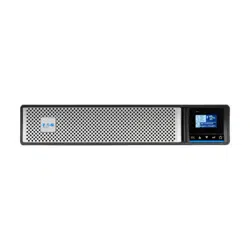Loading ...
Loading ...
Loading ...

614-40095-00
24
Submenu Available settings Default settings
[DB9-7]: [On bat] [Low bat] [Bat fault] [UPS OK] [Load
protected] [Load powered] [General alarm] [OVL pre-
alarm]
[DB9-8]: [On bat] [Low bat] [Bat fault] [UPS OK] [Load
protected] [Load powered] [General alarm] [OVL pre-
alarm]
Remote
command
[Yes] [No]
If Enabled, shutdown or restart commands from software
are authorized.
[Yes]
Shutdown
commands
[Send CMD] [Output OFF] [OFF delay] [restart]
Sets events or fault that will actuate Output signal
parameters through external contact connector or RS232
port
[Send CMD]: [Yes] [No]
[Output OFF]: [No] [UPS] [Group 1]
[Group 2] [Group 1 + 2]
[OFF delay]: [0s] …[999s]
[Restart]: [Yes] [No]
For a proper server shutdown please make sure that the
Output OFF delay is long enough
Send CMD: [No]
Output OFF: [No]
OFF delay: [0s]
Restart: [Yes]
On battery
notice delay
[0s] ... [99s]
Sets delay before providing an on battery notice to
software.
[0s]
General
alarm
[On battery] [Battery fault] [Overload pre-alarm] [Internal
fault] [Ambient temp.] [Fan lock] [Current limit] [Short
circuit] [Inverter overload] [Power overload] [Low battery]
[UPS OK] [Load protected] [Load powered]
Defines which event or fault will generate a general alarm
through Output signal screen.
[Internal fault]
Set Comm
Card IPv4
[DHCP] : [Yes] [No]
[IP Adress] [Subnet mask] [Gateway]
The UPS does not display the IPv4 settings menu by
default, you can activate it by a communication
command.
[Yes]
XXX.XXX.XXX.XXX
4.5 Communication ports
Loading ...
Loading ...
Loading ...
